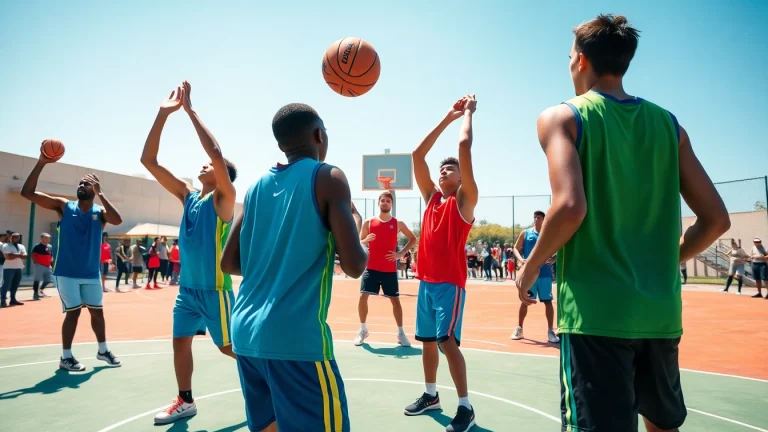
Improve Your Game with Effective Golf Swing Training Aids
The pursuit of an immaculate golf swing is a journey that many golfers embark on, from novices to seasoned pros. One key resource that can significantly aid this journey is a golf swing training aid. These tools can help enhance technique, address swing flaws, and ultimately lead to improved performance on the course. In this comprehensive guide, we will explore the various dimensions of golf swing training aids, including their functionality, choice considerations, implementation strategies, advanced techniques, and the measurement of their impact on your game. Each section aims to equip you with knowledge that enables you to make informed decisions and maximize your golfing potential.
Understanding Golf Swing Training Aids
What are Golf Swing Training Aids?
Golf swing training aids are specialized tools designed to assist golfers in improving their swing mechanics. They come in various forms, including gadgets, instructional software, and physical training devices. Examples range from weighted clubs and swing path trainers to technology-driven systems that provide real-time feedback on swing performance.
These aids are typically categorized based on their focus, such as addressing grip issues, swing tempo, alignment, or power generation. By utilizing such tools, golfers can isolate specific areas needing improvement and practice efficiently, leading to effective learning experiences.
How They Work to Improve Your Swing
Golf swing training aids function by providing feedback, promoting better muscle memory, or enhancing physical capabilities. For instance:
- Feedback Devices: Tools equipped with sensors or visual aids can display your swing metrics in real time, pointing out flaws that might otherwise go unnoticed.
- Weighted Training Aids: These tools increase the resistance against which a golfer swings, helping build muscle strength and improve swing speed over time.
- Alignment Aids: They assist in ensuring that your setup, stance, and swing path maintain consistency, leading to better shot accuracy.
Each type of training aid serves to develop specific skills or correct swing defects, providing golfers with the structure they need in their practice routines.
Benefits of Using Training Aids in Golf
The advantages of integrating training aids in your routine extend beyond immediate swing improvements. Key benefits include:
- Enhanced Learning Curve: Many golfers find that using training aids accelerates the learning process, making it easier to establish correct fundamentals.
- Convenience: Training aids allow for effective practice anytime, whether at the driving range or at home, enabling golfers to hone their skills on their schedule.
- Increased Confidence: As golfers see tangible improvements in their skills through the use of training aids, their confidence on the course tends to increase, leading to better performance during actual play.
- Accessible for All levels: From beginners to advanced players, training aids offer valuable insights that can benefit every golfer, regardless of skill level.
Choosing the Right Golf Swing Training Aid
Factors to Consider When Selecting a Training Aid
To choose the most suitable golf swing training aid, consider the following factors:
- Your Skill Level: Beginners may require different aids focusing on fundamentals than experienced players looking to refine their swing.
- Specific Goals: Determine what you wish to improve—whether it be grip, swing path, or power—and seek aids tailored to those needs.
- Budget: Training aids can vary significantly in price, so it’s important to find a balance between quality and cost that fits your budget.
- Research and Reviews: Look for customer feedback and expert reviews on several devices before making a purchase to ensure you’re buying reputable products.
Top Features to Look for in Training Aids
When evaluating training aids, consider the following top features that enhance their value:
- Durability: Quality materials will ensure the training aid lasts through repeated use, an essential factor especially for frequent practice.
- Portability: If you intend to practice in multiple locations, choose lightweight and portable aids that can easily be transported.
- Adjustability: Training aids that can be adjusted for different skill levels or specific swing faults can provide greater value as they grow with you.
- Ease of Use: A product that is user-friendly will encourage more practice and better results; look for those with intuitive designs or clear instructions.
Comparing Popular Golf Swing Training Aids
With countless training aids available, knowing how to compare them will help targeted buyers make effective choices. Here are a few popular options:
- SKLZ Gold Flex Trainer: This aid focuses on isolation and drill mechanics, making it perfect for developing a rhythmic swing and improving flexibility.
- Orange Whip Trainer: Designed to enhance balance and tempo, the Orange Whip is widely regarded for its unique design and effectiveness in practicing the entire swing.
- SmartGlove: Ideal for correcting grip issues, this training aid promotes proper hand positioning, which is crucial for consistent shot-making.
When evaluating different aids, it’s essential to weigh these options based on personal preferences and the aspects of your game that you aim to improve.
Implementing a Training Routine
How to Incorporate Training Aids into Your Practice
To effectively integrate training aids, follow these best practices:
- Create a Schedule: Establish a regular practice routine that incorporates your chosen aids. Consistency is key to reinforcing learning and muscle memory.
- Start Slow and Gradual: Begin with shorter sessions focusing on one or two aids, gradually increasing duration or complexity as you gain familiarity and comfort.
- Seek Professional Guidance: If possible, work with an instructor who can provide insight into the best way to use training aids, ensuring you’re getting the most out of your investment.
- Focus on Feedback: Utilize feedback from the training aids to make meaningful adjustments to your swing. This real-time information is invaluable for development.
Setting Goals for Your Golf Swing Improvement
Without clear objectives, progress often stagnates. To set effective goals:
- Be Specific: Instead of setting a vague goal like “improve my swing,” aim for specifics, such as “reduce my slice by 10 yards.” A well-defined goal is easier to work towards.
- Set Measurable Objectives: Assessable goals allow you to monitor progression. You might aim to improve swing speed by a specific measurable percentage over a defined time period.
- Consider Timeframes: Set both short-term and long-term goals. While immediate improvements might be your primary area of focus, long-term goals provide a larger vision.
- Regularly Review and Adjust: As you practice, reassess your goals to determine if they continue to be relevant, adjusting as necessary based on progress and changing priorities.
Tracking Progress with Training Aids
Effective progress tracking can be achieved through a combination of tools and techniques:
- Use Data Collection: Many modern aids come with apps or technology that track metrics such as swing speed, angle, or path. Make use of these features to analyze your performance.
- Video Analysis: Record your swing using a smartphone or camera and compare it over time to visually assess improvements or areas still needing work.
- Maintain a Practice Journal: Log your practice sessions to include goals, progress notes, and areas needing attention. This will help reinforce learning and give context to your improvements.
Advanced Techniques with Training Aids
Combining Training Aids with Professional Coaching
While training aids provide significant benefits, their impact can be amplified when coupled with professional coaching. A golf instructor can:
- Provide Customized Advice: Coaches understand the nuances of swing mechanics and can guide you on the optimal aids for your specific strengths and weaknesses.
- Monitor Your Usage: A professional can observe how you’re utilizing training aids, offering tips on adjustments or alternative devices that might yield better results.
- Ensure Efficiency: Coaches ensure that your practice remains productive and structured, helping prevent wasted time or developing incorrect habits.
Utilizing Video Analysis with Training Aids
Video technology has revolutionized how golfers can analyze their swings. By combining video analysis with training aids, players can:
- View Real-Time Feedback: Recording a swing during practice allows you to visually identify errors that may not be apparent during the actual execution.
- Track Progress Over Time: Reviewing footage from different practice sessions shows not only when you’ve improved but identifies persistent faults that may need further attention.
- Correlate Data: Use video insights alongside metrics from training aids to pinpoint specific adjustments that will yield the best improvements.
Drills for Consistent Performance Enhancements
Implementing targeted drills using training aids can solidify muscle memory and enhance key aspects of your golf swing. Some effective drills include:
- Slow Motion Swings: Use weighted clubs to perform slow-motion swings focusing on posture and technique, allowing you to understand the mechanics without the pressure of speed.
- Alignment Checks: Set up alignment sticks alongside swing path training aids to consistently reinforce proper setup throughout practice.
- Tempo Drills: Practice with timing devices or specific training aids that promote smooth transitions in your swing, ensuring rhythm and balance.
Measuring the Impact of Training Aids
Assessing Improvement in Your Golf Swing
Determining the effectiveness of training aids can be achieved through a variety of methods, including:
- Before-and-After Analyses: Taking baseline measurements of your swing parameters before starting a training regimen and comparing them periodically can show measurable improvement.
- Skill Assessments: Regularly participating in practice rounds or simulated play can highlight improvement, revealing better accuracy or distance control.
- Peer or Coach Feedback: Getting evaluations from more experienced players or trainers can provide qualitative insights into your development.
Using Metrics to Evaluate Performance
Quantifying improvements involves understanding and tracking relevant metrics. Some important metrics to monitor include:
- Swing Speed: Measure the speed of your clubhead at impact to determine power improvements. Many training aids offer this feedback directly.
- Shot Accuracy: Track your accuracy on the range over time. Using targets can help establish whether your aim and adjustments using training aids have had a positive effect.
- Distance Measurements: Keep an eye on your shot distances to understand if training has resulted in improved strength or swing path, resulting in greater yardage.
Success Stories from Golfers Who Used Training Aids
Anecdotal evidence from golfers can provide inspiration and validate the benefits of using training aids. Some notable success stories include:
- Amateur Advancement: Many amateur players report significant improvements in their scores, often citing specific training aids that helped them address persistent flaws.
- Tour Player Endorsements: Professional golfers frequently endorse training aids in their routines, proving their efficacy even at the highest levels of the sport.
- Increased Enjoyment: Some golfers emphasize how training aids transformed their practice experiences, turning what was once a frustrating aspect of their game into enjoyable, productive sessions.


